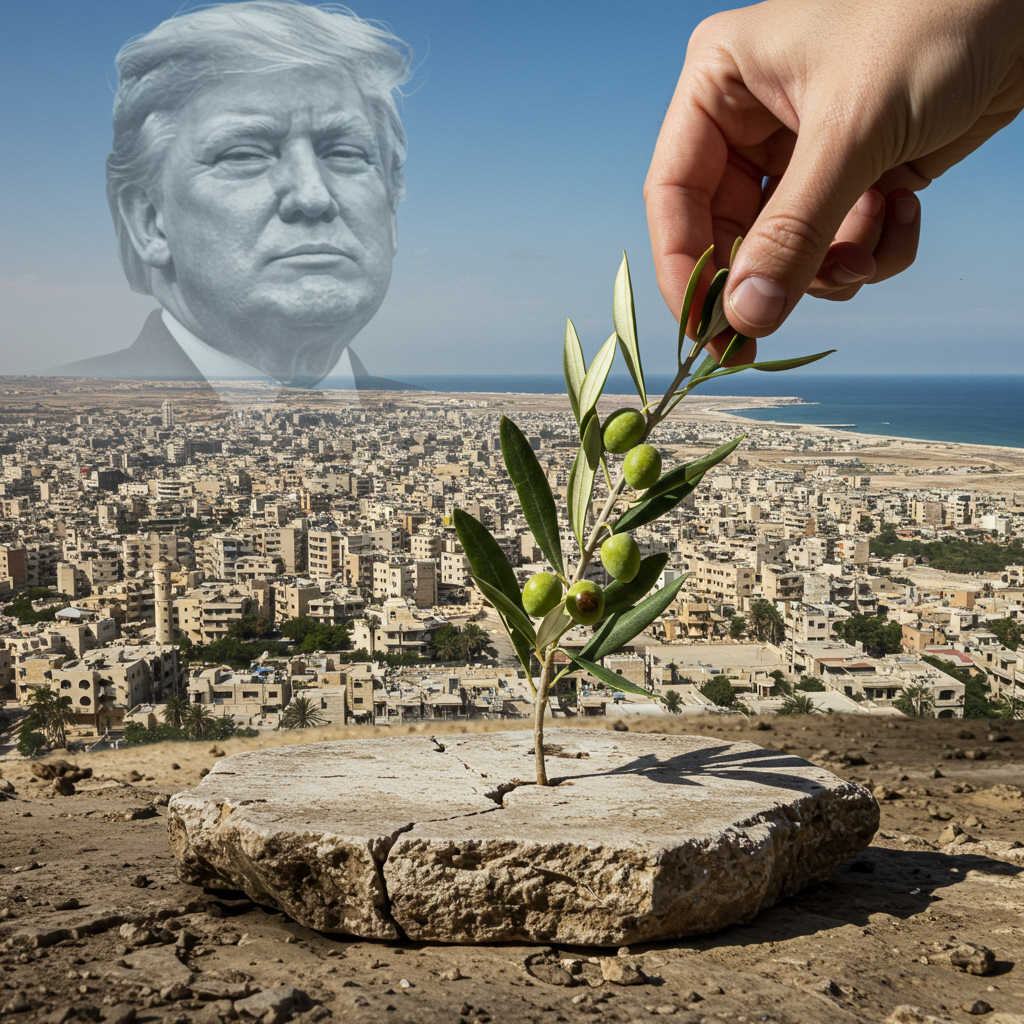In a development that has sent ripples across the international stage, Hamas has reportedly accepted former US President Donald Trump’s proposed plan to end the ongoing conflict in Gaza, albeit with significant conditions. This news, emerging today, marks a crucial juncture in the long-standing Israeli-Palestinian dispute, potentially opening a new, albeit uncertain, path towards de-escalation and peace. Understanding the nuances of Hamas’s acceptance and the implications of their demands is paramount for grasping the current geopolitical landscape.
The Trump Proposal: A Framework for Resolution
While details of Trump’s specific proposal have been subject to varying interpretations and leaks, it is generally understood to involve a multi-phase approach. Key elements often cited include a ceasefire, the release of hostages held by Hamas, and a phased withdrawal of Israeli forces from Gaza. The overarching goal appears to be a cessation of hostilities that could pave the way for a more comprehensive political settlement. Trump, known for his unconventional approach to diplomacy, has positioned his plan as a departure from previous stalled peace initiatives, aiming for a pragmatic solution that addresses immediate humanitarian concerns and lays the groundwork for future discussions. The emphasis, reportedly, is on tangible steps rather than abstract ideological debates.
Hamas’s Conditional Acceptance: A Balancing Act
Hamas’s stated acceptance of the plan is a significant, yet complex, development. Sources indicate that the group’s leadership has agreed to the general framework but has attached several non-negotiable conditions. These conditions are likely to center on core Palestinian demands, including a complete Israeli withdrawal from all occupied territories, the establishment of a sovereign Palestinian state with East Jerusalem as its capital, and the resolution of the Palestinian refugee issue. Furthermore, Hamas may be seeking assurances against future Israeli incursions and a guarantee of sustained international support for rebuilding Gaza. This conditional acceptance highlights Hamas’s strategic calculus: acknowledging a potential pathway to ending the immediate suffering while safeguarding their long-term political objectives and asserting their influence in any future negotiations.
Examining the Conditions: What Hamas Demands
The specifics of Hamas’s conditions are critical. For instance, a demand for a “complete and unconditional” Israeli withdrawal could be a major sticking point. Previous peace proposals have often involved phased withdrawals and security arrangements that Israel has deemed essential. Similarly, the “right of return” for Palestinian refugees is a deeply contentious issue that has historically derailed negotiations. Hamas’s insistence on these points suggests a desire to leverage the current situation to secure concessions that have eluded them in past diplomatic efforts. The international community will be closely watching to see if these conditions are viewed as deal-breakers or as negotiable parameters within a broader peace framework.
Implications for Regional Stability and Future Negotiations
The acceptance of Trump’s plan, even with conditions, by Hamas offers a glimmer of hope in a region fraught with conflict. However, the path forward is far from clear. The success of this initiative will hinge on several factors:
Israeli Response: The Israeli government’s reaction to Hamas’s conditional acceptance will be pivotal. Prime Minister Netanyahu’s administration has consistently maintained its security concerns and its commitment to dismantling Hamas. Any agreement that is perceived as compromising these objectives could face significant domestic opposition.
International Mediation: The role of international mediators, including the United States and regional powers, will be crucial in bridging the gap between Hamas’s demands and Israel’s security needs. Effective diplomacy will be required to navigate the intricate details and build trust between the parties.
Humanitarian Aid and Reconstruction: A critical component of any lasting peace will be the successful implementation of humanitarian aid and reconstruction efforts in Gaza. This includes not only material assistance but also ensuring the long-term economic viability of the region.
Internal Palestinian Politics: The acceptance of a plan by Hamas will also have implications for internal Palestinian political dynamics. It could potentially lead to further divisions or a renewed sense of unity among Palestinian factions, depending on how the negotiations unfold.
The current situation can be likened to previous attempts at conflict resolution in the Middle East, such as the Oslo Accords. While those agreements brought about initial optimism, their ultimate failure to achieve a comprehensive and lasting peace underscores the immense challenges involved. However, the current context, influenced by a new diplomatic approach and the urgent humanitarian crisis, might present a unique opportunity.
Moving Forward: A Cautious Optimism
Hamas’s conditional acceptance of Trump’s plan to end the war in Gaza is a significant development that warrants careful observation. It signifies a potential willingness from Hamas to engage in a dialogue towards de-escalation, but their stated conditions underscore the deep-seated issues that remain at the heart of the conflict. For this initiative to yield tangible results, all parties involved, including Israel, Hamas, and the international community, must demonstrate flexibility, a commitment to constructive dialogue, and a genuine desire for a sustainable peace that addresses the legitimate aspirations of both Israelis and Palestinians. The coming days and weeks will be critical in determining whether this conditional acceptance can translate into a lasting cessation of hostilities and a step towards a more secure future for the region.



